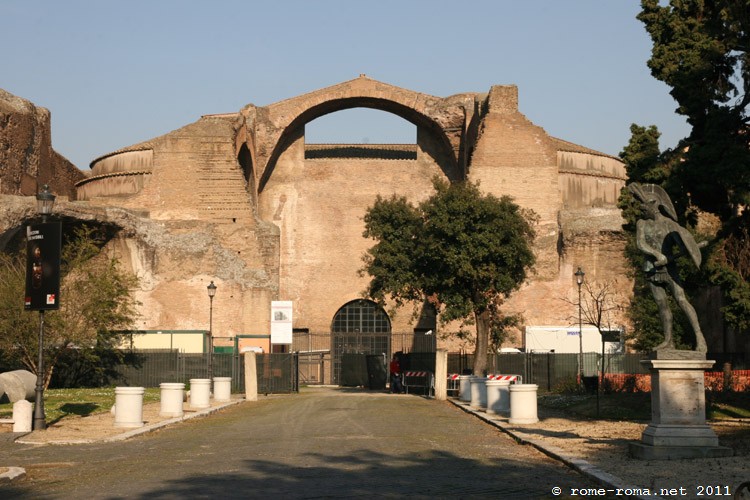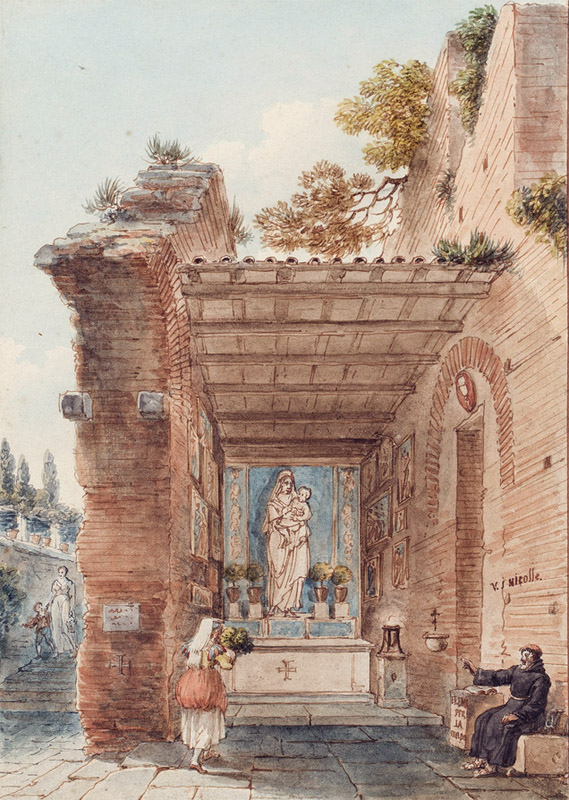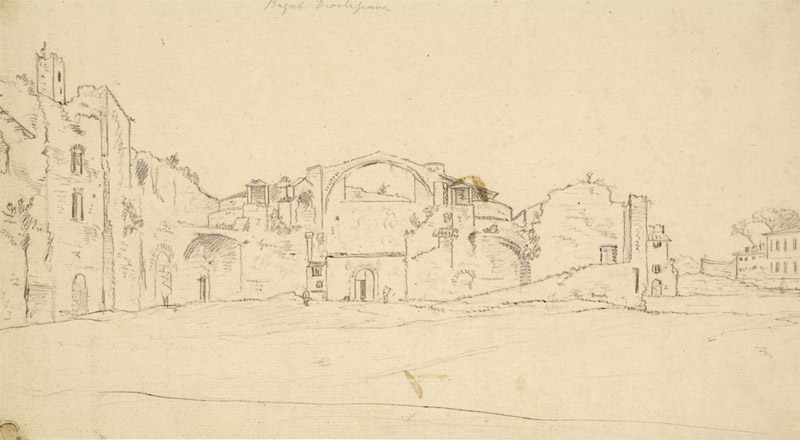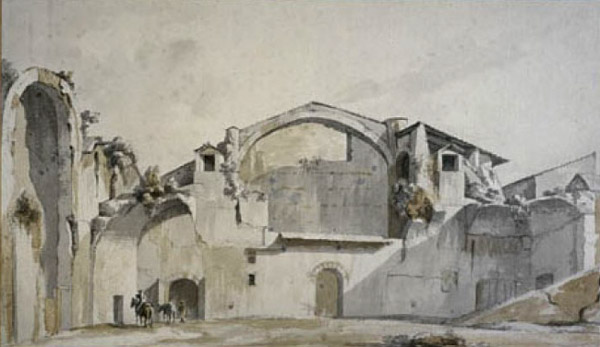The Baths of Diocletian, built between 298 and 306 AD under Emperor Diocletian and his co-emperor Maximian, are the largest bath complexes ever constructed in Rome. Located on the Viminal Hill, near the Piazza della Repubblica, they covered an impressive area of 13 hectares, with dimensions of 380 × 370 meters, capable of accommodating up to 3,000 people simultaneously.
Today, they house a significant part of the National Roman Museum and one of its halls, the Basilica of St. Mary of the Angels and of the Martyrs.
A model of engineering and comfort
The layout of the baths was inspired by that of the Baths of Trajan, with an organization along symmetrical axes. The main rooms were arranged along a central axis: the caldarium (hot bath), the tepidarium (warm bath), and the frigidarium (cold bath). Outside, facilities such as gymnasiums, libraries, and gardens complemented the complex.
To ensure water supply, the baths were fed by a branch of the Aqua Marcia, one of the oldest aqueducts in Rome, and featured a monumental reservoir known as the “botte di Termini”.
Transformation into a church and museum
In the 6th century, the baths were abandoned due to the Gothic invasions and the interruption of the water supply. In the 16th century, Pope Pius IV ordered their transformation into a church and a charterhouse, entrusted to Michelangelo. He designed the church of Santa Maria degli Angeli e dei Martiri in the Tepidarium and a
part of the central hall of the baths.
The majestic cloister, attributed to Michelangelo, was built around 1565, with arcades 80 meters long, housing numerous ancient steles and sarcophagi. The central fountain, erected in 1695, is surrounded by seven colossal heads of animal statues, probably originating from the Forum of Trajan.
On the outer enclosure stood two circular halls, one of which was converted into the Church of San Bernardo.
Today, part of the complex houses the National Roman Museum, offering an immersion into the history of ancient Rome. Visitors can discover archaeological remains, sculptures, and mosaics, testifying to the former grandeur of the baths.
In one of the ancient halls, a family tomb (the Platorini) was installed, along with a columbarium (house for funerary urns) and sarcophagi.
At the entrance to the museum, a landscaped garden has been created, adorned with ancient steles and a large Roman vase serving as a fountain.
Photo gallery
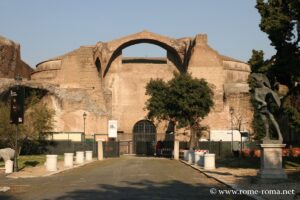

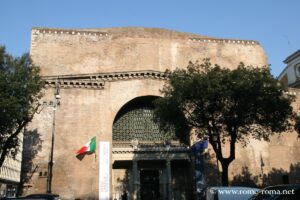
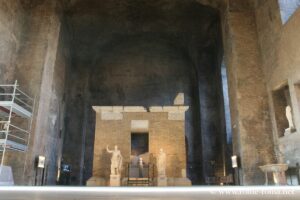
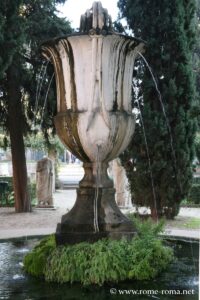
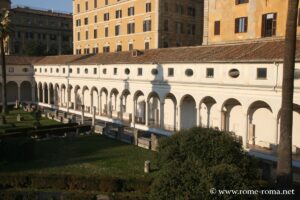
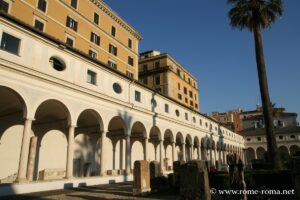
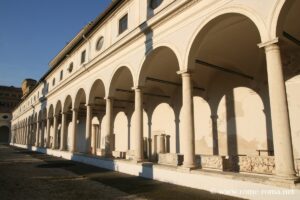
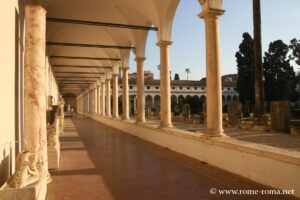
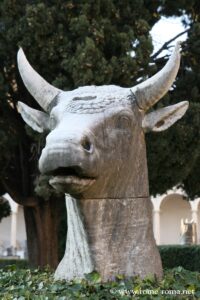
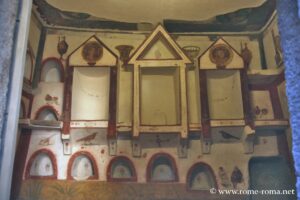

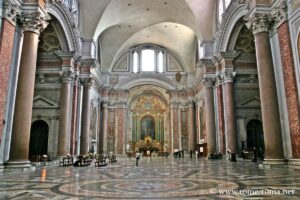
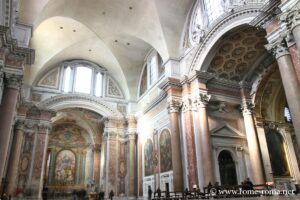
Map and address
Address : Viale Enrico de Nicola, 76, 00185 Roma RM, ItalieIf you see this after your page is loaded completely, leafletJS files are missing.
Ancient views in art
Information
| Baths of Diocletian Viale Enrico De Nicola, 78 |
| See the page dedicated to the Museum of the Baths of Diocletian |
Sources and links |
Articles on the Baths of Diocletian
- Baths of Diocletian
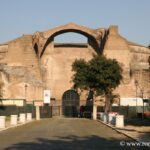 The Baths of Diocletian, built between 298 and 306 AD under Emperor Diocletian and his co-emperor Maximian, are the largest ...
The Baths of Diocletian, built between 298 and 306 AD under Emperor Diocletian and his co-emperor Maximian, are the largest ...

